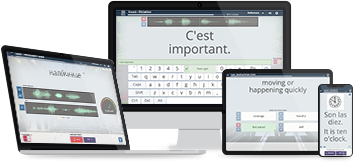Norwegian Noun PhrasesPosted byBjørn A. Bojesenon Apr 30, 2014 inLanguage
Fuglen synger. Toget går.(鸟唱歌。火车就要开了。)一个啊ful lot of phrases consist of a noun phrase + a verbal phrase. Norwegian verbal phrases are a piece of cake:Er, for example, means botham, isandare;pratercan be translated aschat,chats, andam/is/are chatting. Noun phrases are slightly more complex…
Is my noun-of-choicehankjønn(masculine),hunkjønn(feminine) ornøytrum/intetkjønn(neuter)? In Norwegian, that’s the first thing you need to know. All the common nouns of the language have one of those three genders. Even sexless things like fjords and mountains!
The gender of a noun is often revealed when you translateanora”something” from English:an ice-cream>en iskrem,a cat>en katt, amillion>enmillion– those arehankjønn;an eye>et øye, a problem>et problem,a life>et liv– those arenøytrum. It must be said, though, thathunkjønnwords may be introduced by eithereioren, so they may sometimes be mistaken forhankjønnwords:ei/enhytte(a cabin). Unfortunately, there are no good rules to tell the gender of a noun; you have to learn it by heart. Fortunately, the majority of nouns arehankjønn, so stick toenwhenever you’re in doubt!
Is my noun phrase more like a general example, or is it pointing at something concrete? In English, you can easily turn anindefinite noun phrasesuch as ’a car’ into adefiniteone:the car,this car,that car,Ola’s car,my car… In Norwegian, there is a bit more variation:bilen,denne bilen,den bilen,Olas bil,min bil/bilen min. (Hunnkjønnwords such asbok,book, behave in the same way ashannkjønnwords, except that they may optionally get an-aending instead of-en:boka/boken, denne boka/boken, Olas bok, min bok/mi bok/boken min/boka mi.) With a neuter word likehus(house), it becomes:huset,dette huset,det huset,Olas hus,mitt hus/huset mitt.
The definite-indefinite thing becomes really important when you want to throw in an adjective or two in your Norwegian noun phrase. Singular, neuter nouns generally infect their adjectives with atending:bokaer rød(the book is red) >huset er rødt(the house is red);en rød bil(a red car) >et rødt hus(a red house).
However, as soon as an indefinite noun phrase is made definite (a car>this car), any built-in adjective gets aneending, no matter the noun’s gender:en rød bil>Karis røde bil(Kari’s red car),ei rød bok>denne røde boka(this red book),etrødt hus>det røde huset mitt(my red house).
Now you know the basics of Norwegian noun phrases. But how about the plurals? Most of them end in-er. Some of them have no ending. As with the gender the specific plural form of each word has to be learnt separately.
The vast majority of adjectives receive aneending in the plural, no matter whether they describe something definite or indefinite. Note, though, the wordsmå, which is an irregular plural ofliten(little, small):林间空地,城镇,sma排水沟(happy, wild, small boys);disse glade, ville, små guttene(these happy, wild, small boys).
Norsk er faktisk ganske lett, ikke sant?(Norwegian is actually quite easy, isn’t it so?)

Build vocabulary, practice pronunciation, and more with Transparent Language Online. Available anytime, anywhere, on any device.
About the Author:Bjørn A. Bojesen
I was born in Denmark, but spent large parts of my childhood and study years in Norway. I later returned to Denmark, where I finished my MA in Scandinavian Studies. Having relatives in Sweden as well, I feel very Scandinavian! I enjoy reading and travelling, and sharing stories with you! You’re always welcome to share your thoughts with me and the other readers.




Comments:
台灣大樂透:
Wonderful article, thanks a lot !!
Gordon Karpen:
Thank you!